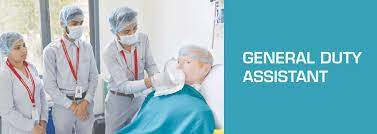Free Pharmacy Assistant Course (1year Diploma Course)
Pharmacy Assistant click here
Pharmacy Assistant:- in the Healthcare Industry is also known as a Pharmacy Technician and Pharmaceutical Care Associate.
Brief Job Description:- Pharmacy Assistants work under the direct supervision of
a registered pharmacist and perform many pharmacy-related functions. They refer any
questions regarding prescriptions, drug information, or health matters to a pharmacist.
They review prescriptions or requests for refills that they receive from patients and nurse.
Personal Attributes:- Pharmacy Assistants should demonstrate strong customer service and
teamwork skills because they interact with patients, co-workers, and health care professionals.
They should have good mathematics, spelling, reading skills and knowledge about the medical
terminologies. Pharmacy assistants should be alert, observant, organized, dedicated, and responsible.
They should be willing and able to take directions, but be able to work independently without constant instruction Pharmacy Assistant Course.


Receive prescription and assist pharmacist in verify that information is complete Pharmacy Assistant Course:- To be competent, the user/individual on the job must be able to:
PC1. Read the prescription carefully
PC2. Assist pharmacist to maintain patient confidentiality when receiving verbal, electronic or transferred prescription
PC3. Assist pharmacist in reviewing prescriptions to confirm that they are complete, authentic and meet all current laws, regulations and policies Pharmacy Assistant Course.
PC4. Assist pharmacist in determining whether the prescription meets all legal requirements, and where it does not, notify the pharmacist and follow up using applicable policies and effective communication
PC5. Assist pharmacist in inspecting the prescription for authenticity and signs of tampering and that prescription is as per current laws, regulations and policies for non-authentic or fraudulent prescriptions
Record and select the correct medicines for dispensing Pharmacy Assistant Course:- To be competent, the user/individual on the job must: PC1. Record prescription information in the patient profile or health record

PC2. Verify entered prescription information against the original prescription Pharmacy Assistant Course
PC3. Select drugs consistent with applicable laws, regulations and policies including interchangeability
PC4. Retrieve, count, or measure quantities of drugs
PC5. Verify prescription products
PC6. Ensure that the prescription product is verified via a final check prior to release
PC7. Ensure that the right prescription products are released to the right patient in case of out-patient and to nurse in case of in-patient
PC8. Answer patient’s questions, referring them to the pharmacist if the question requires patient assessment, clinical analysis or application of therapeutic knowledge
PC9. Reinforce the availability of the pharmacist for discussion or recommendations Pharmacy Assistant Course.
PC10. Manage billing and payment for prescription products/medicines
PC11. Identify and resolve billing or adjudication issues encountered when processing prescriptions PC12. Identify and refer to the pharmacist patients who have discrepancies between their current drug therapy and their recent or intended drug therapy
PC13. Provide information that does not require application of therapeutic knowledge to patients requiring assistance in selecting non-prescription drugs and medical devices
PC14. Instruct patients about the operation and maintenance of medical devices Pharmacy Assistant Course.

Manage and maintain the drugs supply and order Pharmacy Assistant Course:- To be competent, the user/individual on the job must be able to:
PC1. Ensure confidentiality when gathering, using or providing patient information Pharmacy Assistant Course.
PC2. Gather, review, enter and/or update the information required to create and/or maintain a patient record including: Patient demographics
· Health history
· Allergies
· Drug and medical device use
· Payment information
· PC3. Assist pharmacists in compiling best possible medication histories for patients, referring to the pharmacist patients who require assessment, clinical analysis or application of therapeutic knowledge
Maintain proper storage and security condition for drugs Pharmacy Assistant Course:- To be competent, the user/individual on the job must know:
PC1. How to identify the re-order level and send request Pharmacy Assistant Course.
PC2. How to maintain inventory to maximise safe and efficient drug distribution
PC3. How to set order limits and calculate replenishment orders
PC4. How to prepare and place orders in compliance with relevant legislation
PC5. How to identify and minimise risks associated with look-alike and sound alike products Pharmacy Assistant Course.
PC6. How to acquire, receive, verify and store stock and supplies and identify, investigate and resolve or report any discrepancies
PC7. How to support safe and effective drug distribution through workflow management, organising their roles and responsibilities to allow the priority to be on patient care and to minimize diversion and dispensing errors
PC8. Schedule and perform routine equipment maintenance
PC9. How to organise, file and store documents according to legal requirements and in a manner in which they can be retrieved readily

Act within the limits of one’s competence and authority:-
To be competent, the user/individual on the job must be able to:
PC1. Adhere to legislation, protocols and guidelines relevant to one’s role and field of
practice
PC2. Work within organisational systems and requirements as appropriate to one’s
role
PC3. Recognise the boundary of one’s role and responsibility and seek supervision
when situations are beyond one’s competence and authority
PC4. Maintain competence within one’s role and field of practice
PC5. Use relevant research based protocols and guidelines as evidence to inform
one’s practice
PC6. Promote and demonstrate good practice as an individual and as a team member
at all times
PC7. Identify and manage potential and actual risks to the quality and safety of
practice
PC8. Evaluate and reflect on the quality of one’s work and make continuing
improvements
Core Skills/ Generic Skills:- The user/ individual on the job needs to know and understand how to: SA1. Write clearly and concisely
SA2. Use effective written communication protocols
Reading Skills:-

The user/individual on the job needs to:
SA3. Read and understand information and clinical notes presented in writing
SA4. How to read and understand the acts and policies
SA5. How to read the electronic request for required medicines by nurse in case of in-patient
Oral Communication (Listening and Speaking skills):- The user/individual on the job needs to know and understand how to:
SA6. Practice effective communication with colleagues and other health professionals while maintaining a professional attitude
SA7. Pronounce technical terms correctly
SA8. Use listening skills effectively in performing job functions
SA9. Use effective protocols for communicating with patients who are non-English speakers or who are impaired (e.g. blind, deaf, cognitively impaired, illiterate)


Professional Skills Pharmacy Assistant Course:- The user/individual on the job needs to know and understand how to:
SB1. Make decisions safely and appropriately Pharmacy Assistant Course.
Plan and Organise:- The user/individual on the job needs to know and understand how to :
SB2. Plan and organise activities required to prepare work area for scheduled procedures
Patient Centricity:- The user/individual on the job needs to know and understand how to:
SB3. Maintain patient confidentiality
SB4. Explain the prescription to patients calmly when they as
Problem Solving:- The user/individual on the job needs to:
SB5. Identify source of error and initiates corrective action
Analytical Thinking:- The user/individual on the job needs to know and understand how to:
SB6. Differentiate between the prescribed medicines and un-prescribed medicines Pharmacy Assistant Course.
Critical Thinking:- The user/individual on the job needs to know and understand how to:
SB7. Analyse, evaluate and apply the information gathered from observation, experience, reasoning, or communication
to act efficiently

Technical Knowledge:- The user/individual on the job needs to know and understand:
KB1. The boundaries of one’s role and responsibilities and other team members
KB2. The reasons for working within the limits of one’s competence and authority
KB3. The importance of personally promoting and demonstrating good practice
KB4. The legislation, protocols and guidelines effecting one’s work
KB5. The organisational systems and requirements relevant to one’s role
KB6. The sources of information that can be accessed to maintain an
awareness of research and developments in one’s area of work
KB7. The difference between direct and indirect supervision and autonomous practice,
and which combination is most applicable in different circumstances
KB8. The risks to quality and safety arising from:
1 Working outside the boundaries of competence and authority
2 Not keeping up to date with best practice
3 Poor communication
4 Insufficient support
5 Lack of resources
KB9. The importance of individual or team compliance with legislation, protocols, and guidelines and
organizational systems and requirements
KB10.How to Report and minimise risks
KB11.The principle of meeting the organisation’s needs,
and how this should enable one to recognize one’s own limitations and when one should seek support from others
KB11.The principle of meeting the organization’s needs, and how this should
enable one to recognize one’s own limitations and when one should seek support from others
KB11.The principle of meeting the organisation’s needs, and how this should enable one to
recognize one’s own limitations and when one should seek support from others Pharmacy Assistant Course.
KB12.The processes by which improvements to protocols/guidelines and organisational systems/requirements should be reported
KB13.The procedure for accessing training, learning and development needs for oneself and/or others within one’s organization
KB14.The actions that can be taken to ensure a current, clear and accurate understanding
of roles and responsibilities is maintained, and how this affects the way one work as an individual or part of a team






